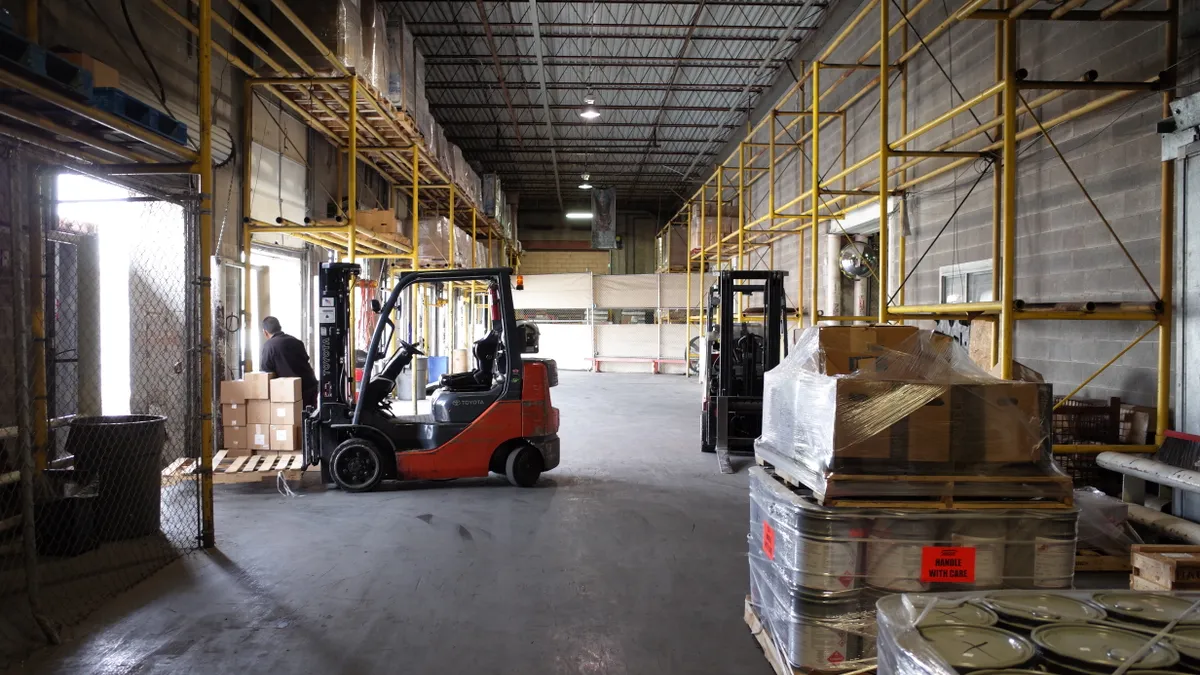Dive Brief:
- Continued rapid growth in the e-commerce industry has caused a capacity crunch in warehouses nationwide in recent years. But increased investment in new industrial real estate helped lead to a slight increase (6 basis points) in U.S. warehousing availability in Q2 2019, according to a new CBRE report sent to Supply Chain Dive.
- "We long have forecast that availability would bottom out and then slowly increase as a natural progression for the red-hot industrial market in the U.S.," Richard Barkham, the CBRE head of Americas research and global chief economist, said in a press release emailed to Supply Chain Dive. "In the future this might provide respite for e-commerce companies and other users that have faced many years with scant availability of space. At the moment, though, the market remains quite tight." CBRE reports while availability is up slightly for Q2, the year-over-year rate is still down by 12 basis points.
- There are other factors researchers are keeping in mind as well, mainly the health of the broader economy. "We do expect the factors driving demand to ease slightly in the coming quarters, as economic growth slows," Barkham said. However, CBRE doesn't expect this to be dramatic and the slight easing would primarily affect larger "big box" units.
Dive Insight:
Overall, CBRE reports the addition and occupation of new warehousing space has been more or less evenly matched for the past year. Across the 64 national markets CBRE surveyed for the Q2 report, 33 reported increased availability, 27 reported decreased availability and four said they hadn't experienced any change.
While the warehousing market remains tight and the e-commerce sector continues to boom, multiple market reports have forecast a slowdown in the freight market over the next year, particularly for trucking and air cargo. In addition, freight volumes at the Port of Los Angeles are expected to slow in 2019 and the economy-wide disruption caused by trade volatility has some analysts predicting a recession sooner rather than later.
Despite these early indicators, shippers shouldn't get too excited about a more relaxed market, Barkham told Supply Chain Dive over email.
"There is no doubt that the U.S. economy is slowing, from around 3% over in 2017 and 2018, down to about 2%," he said of the U.S. growth rate. "The sector that is particularly hit is manufacturing (including intermediate demand), and this may be affecting the trucking industry, but there is little evidence final demand has weakened. Quite the contrary, consumers remain confident and are spending. Our evidence is that there has been a mild weakening in demand for big box units (warehouses) ... However, demand for smaller, local units linked to last-mile delivery remains very strong."
A number of factors could be causing the slowdown in the trucking and overall freight market, but not all of them are related to distribution facilities, Barkham said. He believes the current economic slowdown could be driven by overall reduced investment and manufacturing output as opposed to changes in consumer demand that would affect warehousing directly.















